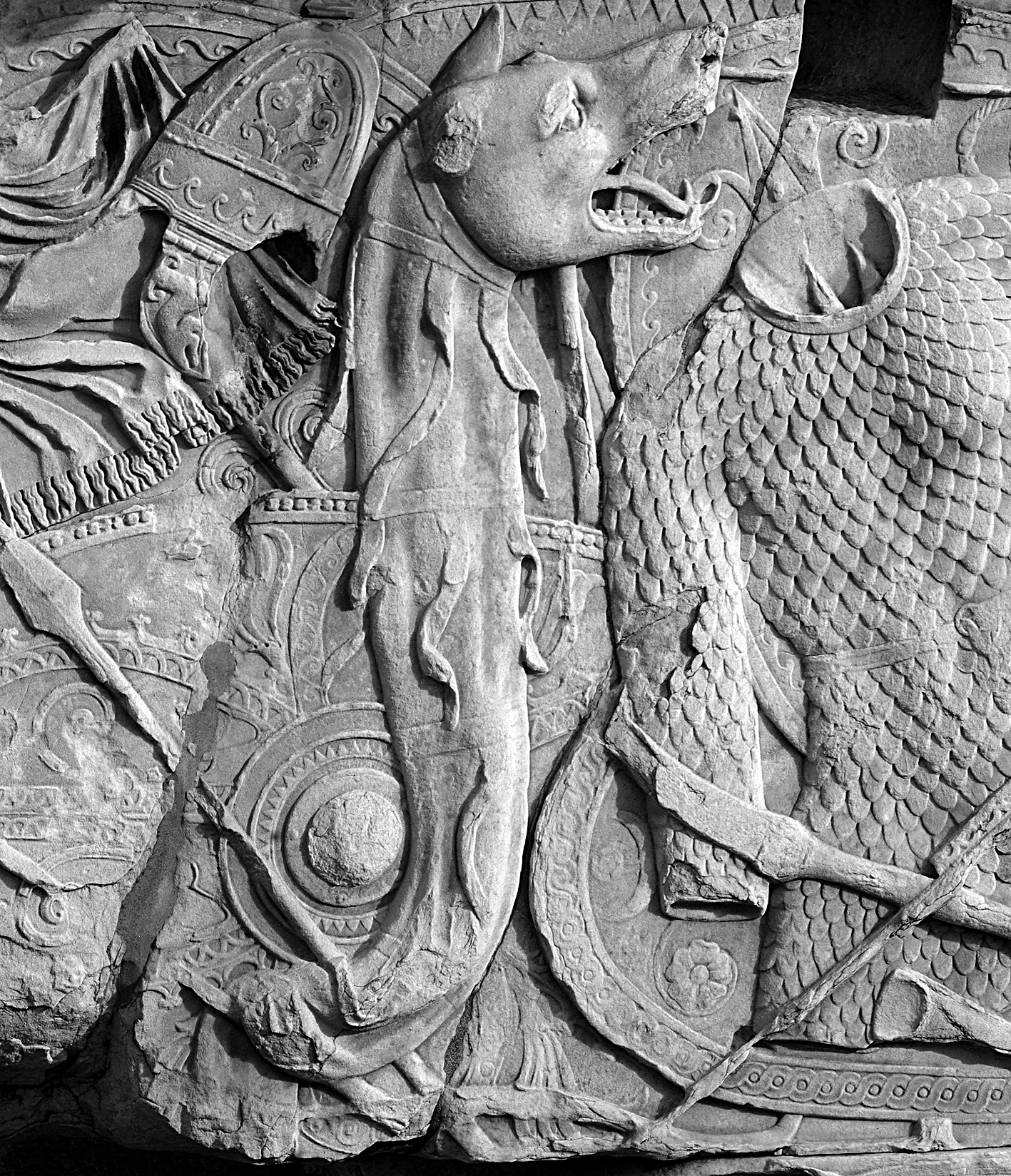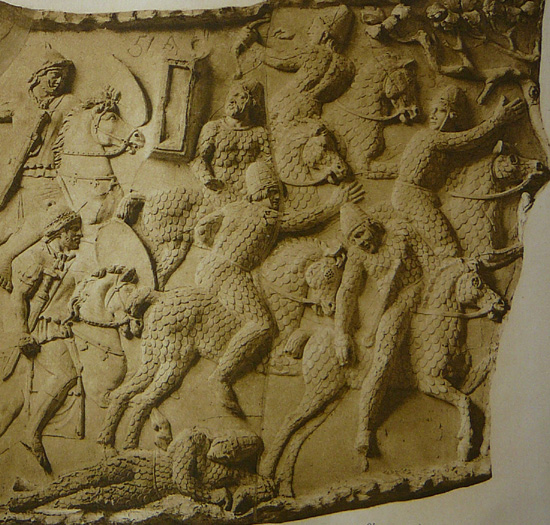GETO-DACIAN ROSTER
(Daoi, Getai)

Early Komatai Levies
Early Komatai Skirmishers
Early Komatai Spearmen
Early Komatai Archers
Early Komatai Drepanophoroi
Early Tarabostes Warriors
Early Tarabostes Riders
Getai Hippotoxotai
Getai Noble Riders
Burebista Reform
Komatai Levies
Komatai Skirmishers
Komatai Spearmen
Komatai Archers
Komatai Drepanophoroi
Tarabostes Warriors
Tarabostes Riders
Costoboki Spearmen
Costoboki Noble Riders
Decebalus reform
Tarabostes Spearmen
Tarabostes Spearmen Raider (naval unit)
Dacian Scorpio
Dacian Bastion Ballista
Bastjanthai Rhomphaiophoroi
Raokhshna Kontophoroi
Raokshna Hippotoxotai
ROOSTER IN DETAIL
The Komatai (long-hairs) were the lower class of Geto-Dacian society. Most of them were farmers or herders, absolutely not professional fighters.
They were called to arms in time of great need, but never formed a stabile army.
Early Komatai Levies
The axe was a common weapon for lower class warriors, often an everyday tool reverted to weapon in case of need.
Early Komatai Skirmishers
Early Komatai Spearmen
Early Komatai Archers
Early Komatai Drepanophoroi
The two handed dacian falx was a weapon similar and related to the thracian Rhomphaia, even if more curved in shape.
Some historians believed that some of the modifications that occurred in the roman legionaries' panoply were subsequent to confront this kind of disrupting weapon
The Tarabostes were the upper class of Dacian society, actually the rich merchants, the nobles and the aristocracy.
Classical accounts defined them as “Pileati”, because of their distinctive cap, the pileus, that defined their status and distinguished them from the commoner Komatai, that were bareheaded.
Early Tarabostes Warriors
Early Tarabostes Riders
The Getai were a Thracian people strongly related to the Dacian group and strongly influenced by steppe cultures like Scythians.
As reported by Thucydides, Getai were, as Scythians, used to deploy horse archers in combat.
Getai Hippotoxotai
Getai Noble Riders
Deeply influenced by steppe cultures, in the Getai findings we can identify the figures of heavy armoured horsemen, without doubt coming from the upper class.
Burebista Reform
King Burebista actually succeeded to unify all Dacian and Getic tribes in a kingdom, especially with the help of Deceneus, a priest that taught to the Dacians a new code of laws, astronomy and also established a recorded calendar.
He expanded greatly the borders of Dacian territories, chasing or subduing the Pannonian Celts that were harassing Dacia.
At this time, Dacian panoply undergo to the some of the same changes that occurred in Celtic La Téne context: the shields lose the central wooden spina in favor of round metal boss, and some longer sword were introduced.
Komatai Levies
Komatai Skirmishers
Komatai Spearmen
Komatai Archers
Komatai Drepanophoroi
Tarabostes Warriors
Tarabostes Riders
The Costoboci, that were ascribed by Strabo and Ptolemy as part of the multiethnic Bastarnae federation, are identified by archaeologists either with the Lipiţa Culture or the Poiana-Răcătău-Tinosul Culture, and appeared to have deep celtic influence in their material culture, while their ethnic origin is probably mixed Dacian and Germanic.




Costoboki Spearmen
Costoboki Noble Riders
Decebalus reform
After the dissolution of the kingdom of Burebista, Dacians became again divided, until the family of Decebalus stood up to reform the kingdom.
Decebalus trained better soldiers and start to bring inside the Dacian koiné different tribal entities like the the Celto-Germanic Bastarnae and the Scythian Roxolani.
Tarabostes Spearmen
Dacian Scorpio
At the end of the Dacian Wars, the defeated Decebalus was forced to "surrender all his war engines" to the Romans, a sign that demonstrates the Dacians at some point did possessed machines of war, that probably were both a product of local craftmanship and something plundered from the Romans.
Bastjanthai Rhomphaiophoroi
On the Adamklisi metope there are some warriors fighting the Romans with huge falx-like weapons, that have been identified as Bastarnae, expecially due to the suebian knot on their hairs

The Roxolani, both as heavy cavalry and heavy horse archers are attested on Trajan's Column as fighting alongside the Dacians.
It is not totally clear if they were mercenaries, allied or even federate troops.


Raokhshna Kontophoroi
Raokshna Hippotoxotai



















 Reply With Quote
Reply With Quote



































































